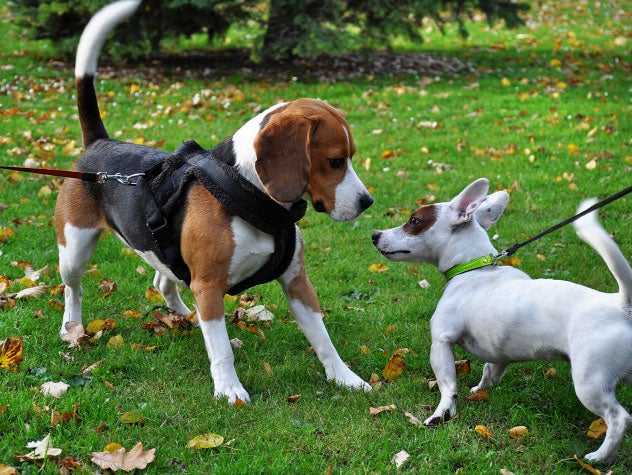How to Introduce a New Dog and Get Dogs to Bond

Check out these simple ways to help your dog adjust to a new dog in the home.
Adopting a second dog has many benefits. It can help calm down your current dog, give him a companion while you are at work or away from home, and even offer you more protection and make you feel safer. Even though dogs in general like to be part of a pack, sometimes adding a new dog to the family can be difficult. These five tips could help make the adjustment smoother for you and your dogs.
Tip #1: Have an Extra Set of Hands
Even if your dog is well trained, you can never be too sure how he will react to another dog living in his space. It’s a good idea to have a friend bring their dog over so you can test your dog’s reaction to another dog in the house prior to acquiring another dog of your own. It may work out best if your new dog is the opposite sex of your current dog.
Have the two dogs first meet in a neutral area such as a local park, and have another person that your dog trusts help you with the initial meeting. You should handle your own dog and have the other person handle the new dog. Both dogs should be on a leash and allowed to sniff each other out but you should be able to pull them apart with the leashes if needed.
If the initial meeting goes well, take both dogs for a walk together and reinforce good behavior with treats. You can take them home and let them spend time together outdoors first if possible to prevent marking behavior indoors when they come inside.
Tip #2: Have Separate Spaces for the Dogs for the First Week
It is important to have time for the dogs to be together as well as time for the dogs to be separated. Both dogs need to have some one-on-one time with you, and by separating them for a short period each day, you can bond well with both of them separately.
Take one outside to play and then switch and take the other dog outside. It is also important to feed the dogs separately. Continue to give each dog one-on-one time for the whole first week.
Tip #3: Reward Good Behavior
As your old dog and new dog adjust to each other, be sure to reward positive behavior with treats or extra attention and positive words. Encouraging the positive behaviors that you want your new pair to exhibit can help the dogs get along and bond with each other faster.
Tip #4: Be Patient and Calm
If after a few days (or even a week) your dogs do not seem to be getting along, be patient. If you show signs of being uneasy or worried the dogs may sense that and be on edge themselves. Try to stay calm and patient and work to keep the dogs calm and patient as well.
Try not to change the current dog’s daily routine but have the new dog adjust to your current dog’s routine. Keep in mind that dogs thrive on a consistent structure where they know what is expected of them.
Tip #5: Be Aware
In addition to being patient with both dogs, be aware of what, if anything, is causing the dogs to fight or not get along. Look for body signals from both pets to determine when they are most upset or irritated and what might be triggering the irritation.
For example, if food causes problems, consider putting one dog outside while you feed the other or put them in separate rooms to eat. Try to eliminate situations that get either dog too excited or irritated until they start showing signs of bonding and getting along with each other.
Adopting another dog can seem a bit overwhelming at first, but if you follow these five tips, you will likely help your dogs bond and become lifelong buddies.